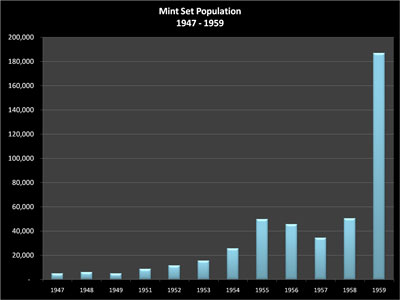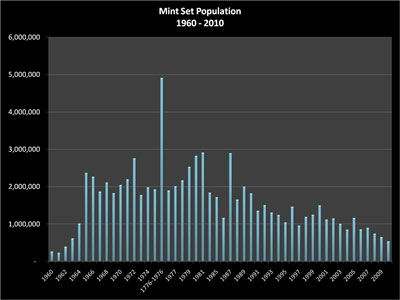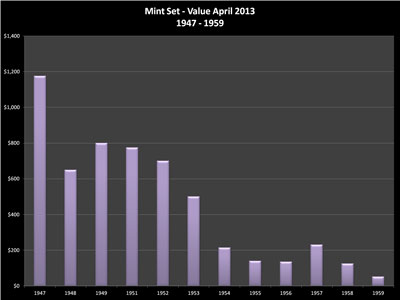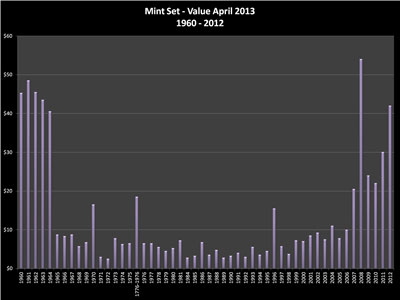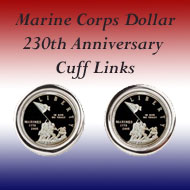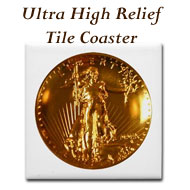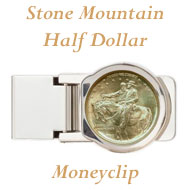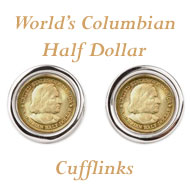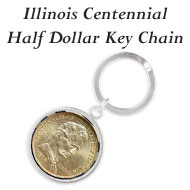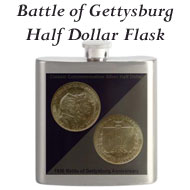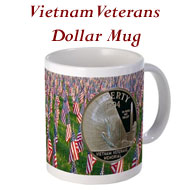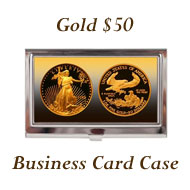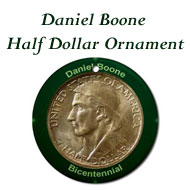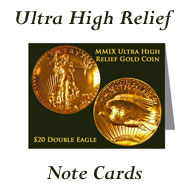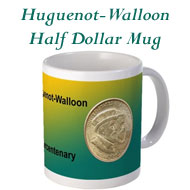|
Greater Atlanta Coin Show |
||
| coin show and coin information for collectors and investors | ||
You are here: Coin Shows > Mint Sets
Coins - Mint SetsThe US Mint began a standard process for providing mint sets in 1947. The first sets contained two of each coin from each mint. Changes in packaging in 1959 reduced the coins to one example of each circulating coin produced by each mint. Mint sets, also called Uncirculated Coin Sets, provide "mint condition" examples of circulating coinage. In the early days, the mint sets consisted of coins pulled from the mint's processes prior to being released for circulation. Later, as their processes improved, machines took the just minted coins and packaged the uncirculated coin sets without the coins being touched by human hands. More recent mint sets use special coin presses that strike the coin blanks with greater force. The process and the dies produce collectible coins with more defined images. Mint Sets PopulationPopulation numbers for the early mint sets are estimates as records are not available for those minted and distributed. But, those numbers are probably high due to the silver coins being melted in earlier years. Today, the early sets are worth more as sets rather than their silver content.
As time passed and people's interest grew, the US Mint increased production of their mint sets.
The quantity of mint sets varied through the years and have recently been decreasing. The decrease can be attributed, at least in part, to the Mint producing a variety of products in the recent years. Click here for mint sets population details for the numbers behind the charts including the quantity of coins, face value and issue price. Mint Sets ValuesWith the rarity of the early mint sets, they have higher value than the more recent varieties.
The later years show a variety of prices, some of which reflect silver content in the sets.
The market prices in the charts above are already out-of-date. With the fluctuations in the metals, in particular silver and gold, people's interests have focused on the metals. This can increase the earlier sets' values and decrease the more recent. Remember, supply and demand govern the market. Interestingly, though, as the silver price increases, some sets become worth more as silver rather than as a mint set collectible. As a result, the sets are broken apart for the silver coins to be melted. Of course, this means there will be fewer of those mint sets in the future which could equate to price increases at some point. Mint Sets Silver ContentThe mint sets prior to 1965 contained 90% silver dimes, quarters and half dollars. The special mint sets for 1965 through 1967 contained one 40% silver half dollar each year. For 1968 through 1970, the mint sets contained two 40% silver half dollars, one each from the Denver and Philadelphia mints. No 90% or 40% silver coins were included in the mint sets beginning in 1971 until the special bicentennial mint set released for 1976. This mint set contained three 40% silver coins, quarter, half dollar and dollar, with the 1776-1976 dates on the obverse and the special bicentennial reverse images. Since mint sets use the same type of coin blanks as circulating coinage, and for the most part, similar minting processes, it is important the original packaging be kept intact. Otherwise, the coins will not be detectable as mint set collectibles. In addition, the original packaging should not be torn or broken, and no writing should be on the US Mint's certificate, box or wrapping. Also, tape and stickers should not be attached to a set or its packaging materials. Mint Sets provide examples of the circulating coinage from each mint for the particular year. These mint sets offer an easy and relatively inexpensive way for collectors, new and experienced, to increase their collections. Plus, Mint Sets make great gifts to commemorate birthdays and anniversaries for friends and family. Mint Sets DetailsClick on the decade or a specific year to learn more about the individual Mint Sets.
SMS = Special Mint Set Mint Sets provide a history lesson with uncirculated versions of the nation's circulating coins. They also provide fun and education. | ||||||||||||||||||||||||||||||||||||||||||||||||||||||||||||||||||||||||||||||||||||||||
Coin Shows GACS Numismatic Shoppe Contact Us Privacy Site Map |
© Copyright Atlanta Coin Expositions, 2008-2016. All Rights
Reserved.
Several of the links on the pages within this web site go to affiliate vendors.
A vendor affiliation can mean a small monetary compensation to the web site owner.

